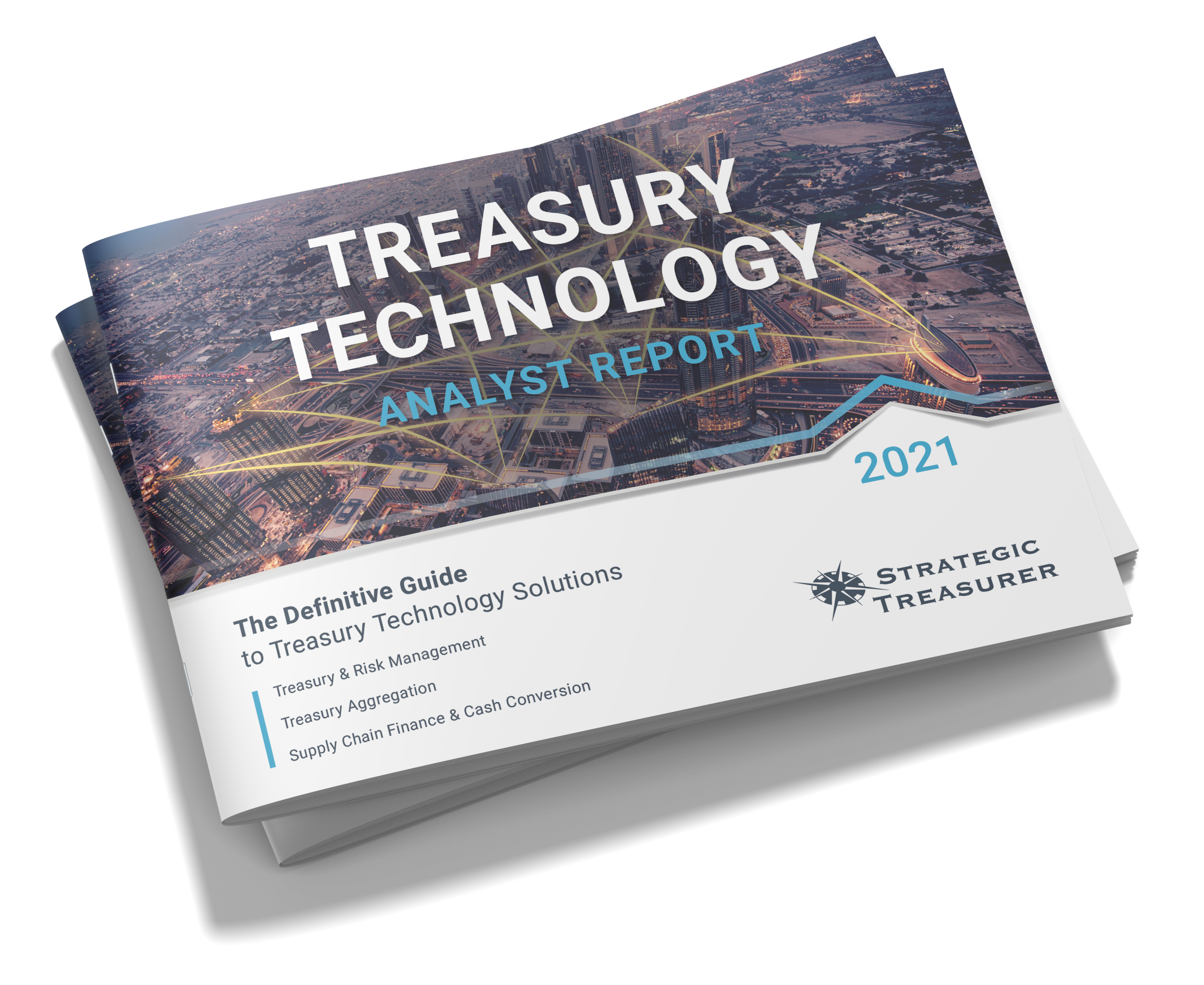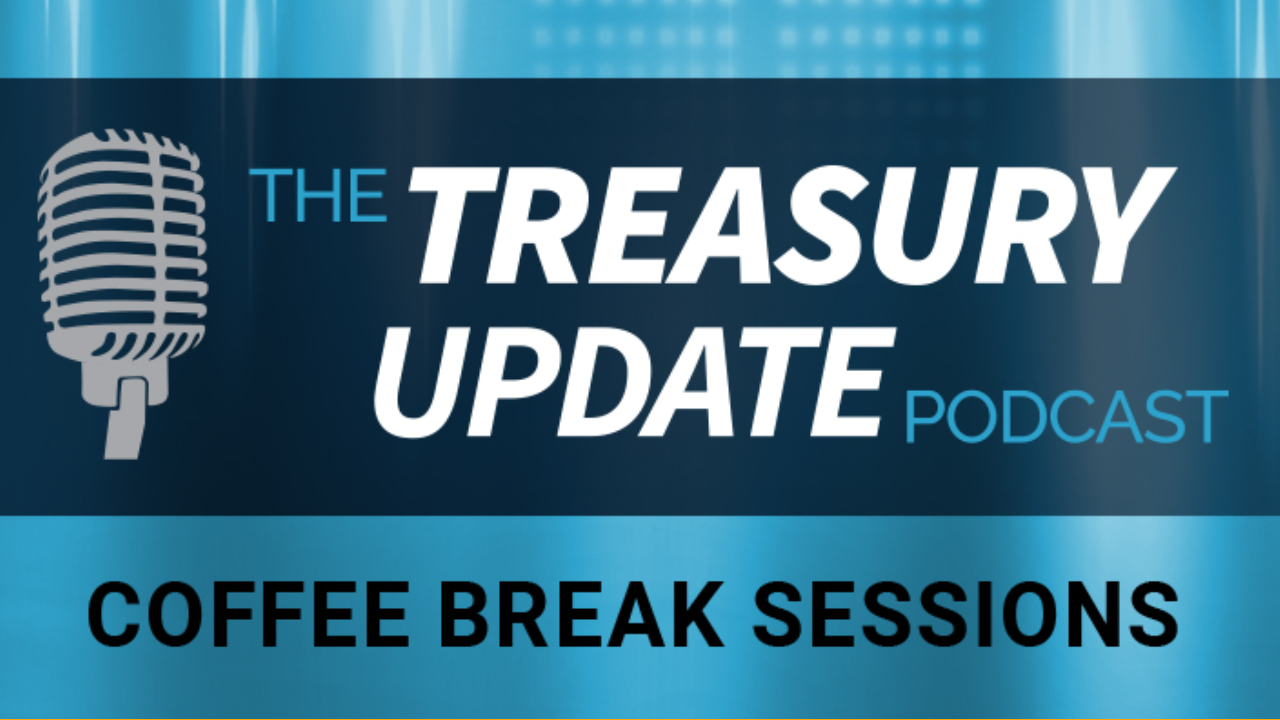
Session 70
Coffee Break Session:
What Is Fund Investing?
Host:
Jason Campbell, Strategic Treasurer


Speaker:
Paul Galloway, Strategic Treasurer


Episode Transcription - (Coffee Break Session Series) - Episode 70 - What Is Fund Investing?
Jason Campbell 00:03
Welcome to the Treasury Update Podcast, Coffee Break Sessions presented by Strategic Treasurer covering foundational topics and core treasury issues. And about the same amount of time it takes you to drink your cup of coffee. I’ll be your host Jason Campbell, business development leader at Strategic Treasurer. Alright chatting with me today, again is Paul Galloway, Senior Advisor at Strategic Treasurer. Paul, welcome back. I’m excited to have the opportunity to talk to you again.
Paul Galloway 00:28
Yeah, thanks for having me, Jason.
Jason Campbell 00:30
And, you know, again, I know we’ve been doing a couple episodes now and investing and you know, similar to a conversation we just recently had, I think it’s great. I think it’s, it’s, you always no matter how much of investing someone may know, it’s always great to get a different perspective. And just, you find those little tidbit nuggets that just makes you even a little bit smarter in that subject. So I’m excited to continue. In our next episode here, the coffee break sessions, talking a lot about about fund investing. So Paul, let’s kick it off here. So, so talk to us a little about what what are the various types of funds someone can invest in?
Paul Galloway 01:03
Yeah, the typical types of funds that you’ll see out there, either for institutional investors or retail investors are money market mutual funds, mutual funds, and exchange traded funds or instant index funds. So these are the typical types of funds that you’ll see out there. A money market mutual fund comes in a couple of varieties of flavors, they’re used a lot by institutional investors, such as pension plans, insurance companies, or corporate investors. These can be treasury government funds, or what’s called prime funds. These particular funds are a lot of them tend to be to a seven funds as an SEC Rule that denotes the stability of the nav, which is a net asset value of a fund. And so when you think about Treasury funds, or government funds, those are fixed nav funds by roll to a seven. And so those funds, the nav doesn’t move, it’s always one. One is the NAVs value of a treasury fund or government fund. Now, prime funds, those are stable value funds. And what that means is the nav will float so it can flow but it’s stable. So you won’t have a lot of volatility in the price movement of those particular funds. And so, when you think about risk, Treasury funds, and government funds are a lot less risky than prime funds, prime funds are going to be more risky. So you’ll get better returns of prime funds, but you’re getting more risk. And when it comes to mutual funds, those are floating NAV, there is no stability, those funds will move with changes in market conditions. And those can be equity funds, bond funds, or some type of index fund, that it’s tied to a market index. And then exchange traded funds are often index funds. So they’re tied to a particular index out in the market, such as you know, like S&P 500, as a common exchange traded fund.
Jason Campbell 03:17
And how are these funds different from from each other?
Paul Galloway 03:21
Money market mutual funds are typically used for less volatility of the underlying value of the assets and those funds. So it’s less risk less return, you typically would see institutional investors using these funds for shorter term investments, meaning they are not going to be willing to go out more than a year in terms of duration. When I say duration, that means the period that the investment underlying investments are locked up. And there can be certain type of credit ratings associated with these funds tied to the specific investments are made. So they’ll look at ratings mix, the portfolio, the different types of investments, duration, and then these are gonna be shorter term types of investments, lower risk less yield, when we move to mutual funds, mutual funds, depending on what type of fund you’re investing in, can have a wide range of risk return profiles. And so there’s equity bonds, or some combination of those two types of funds. There can be blended funds between equity and bonds. They can be small cap, mid cap or large cap, meaning it’s the size of the underlying investments, which are typically like companies that you’re investing in. So you can have smaller size companies, midsize companies or large size companies. And when we say cap, it’s capital value. You have the particular specific investments that are being made. And along that you can either do value investing or growth investing. So, value stocks tend to trade below the relative their relative fundamentals. And whether it be by fundamentals, it would be like whatever dividends, earnings or sales are saying about the company. So these would be undervalued stocks, then there are growth stocks, which growth stocks are typically tied to companies, they have consistent, sustainable, significant positive earnings or cash flow, and that will be a gross stock, then kind of in between those two will be core stocks. So a core stock would be something that I use the term consistent with growth stocks, really sustainable is probably better term on the growth side. But, of course, stocks is truly consistent growth, meaning year after year, you can rely on that they’re going to have X percent growth, their earnings are predictable, that would be a core stock. And then you can take another step and say, hey, I can either invest in funds that are domestic and in our case, US based investments, or I can make investments and funds that go international, maybe you’re looking for something that is Asia based or euro based or South American based, I mean, it can be all over the place. And then exchange traded funds. What makes exchange traded funds unique is a couple times, unlike money market funds, and mutual funds where they have very set nav strikes, money market funds, typically it’s in the day mutual funds, you could have nav strikes two to three times throughout the day. But exchange traded funds, the asset value is struck multiple times throughout the day. And typically it’s like something like every five minutes or so. And so what I mean by that, it means that mark all the market factors are taken into consideration with current point in time, where the value of the fund is set at X dollars at that particular time that Ken happens throughout the day, multiple times throughout the day. So happens a lot. So it behaves a lot more like how stocks are valued throughout the day. Now stocks, obviously they’re being priced like every second, in some cases, every millisecond, stocks are being priced. In the case of exchange traded funds. It’s like every five minutes, the net asset value is being determined. And one of the other things that make exchange traded funds, which are typically indexed to an underlying benchmark, like this V 500, is that some funds allow you to engage in options. So you can buy and sell options or puts or calls the right to buy or sell the underlying asset, in this case, the exchange traded fund.
Jason Campbell 08:21
So it seems like you got kind of three, when I say probably three options to be an investor, right, you can easily be a patient. One is you’re talking about like seeing something that’s going to change multiple, multiple points throughout the day, right? You have that radical investor who’s just going to change their investments on, you know, on a flyby basis, whether that’s, you know, multiple transaction throughout the day, or you have that one that’s kind of in the middle, right? So you kind of got to look at and say what type of investor you do want to be because it could be something that’s very safe and steady, or something that can be changed at the drop of a hat. So interesting stuff. Let’s go and talk about risk considerations. And fund investing kind of walk us through a little bit of what you feel are some things to consider.
Paul Galloway 09:00
I just outlined the various types of funds, you know what types of investments you can make. And so it really depends on the type of fund that you’re investing in. Some have Low risk, low return, some have high risk high returns, when you think about the risk considerations, our previous podcasts that we had, we talked about market risk, market risk, or beta systemic risk. The risk premium is what you focus on in terms of investment profile. When I think about investing in these funds, my head typically goes to a portfolio of funds because whether you’re an institutional investor, or you’re a retail investor, you’re going to invest in more than one type of fun. And so it depends on your risk appetite. So as an investor, you’re going to determine you know, what is the risk appetite that you’re willing to accept. This is what makes kind of investing in them funds. Okay unique because as an investor, you’re doing an allocation across these various funds based on for lack of better term investment guidelines. So institutional investors typically establish investment guidelines that put up parameters around what types of investments you can make, what types of allocation buckets you can have to these various funds. And you got to adhere to that, as an institutional investor, you will make decisions based on those investment guidelines and what’s happening in the market. So those market risks, you’re taking those into consideration, what’s happening in the market can have an impact on how you allocate, then, as a retail investor, you’re looking at what is your risk appetite, so I’ll just kind of take the book ends. I’m a retail investor, that’s just starting out in my career, so I’m in somewhere in my mid to late 20s. And I’m making investments on my 401 K plan. Being a younger person, I can take on more risk. So I might have more investments in things that are, you know, small cap, mid cap value stocks, growth stocks, also go international, in particular in something that is, you know, emerging markets versus something that is a developed market. So I might allocate more to these riskier stocks, meaning they have more volatility in their returns, but they have more payoff, so more risk, but more payoff. So I’m willing, as a younger investor to tick that today, because in my 401 K plan, I’m a long term investor. And so it will grow over time. And over time, you know, that should pay off. Of course, there is some kind of allocation you’re going to do across these different types of investments, and you have a certain allocation to things that are less volatile, like you’ll have a bigger allocation or investments in funds that are more volatile, but higher payoff. Now let’s take a person who’s getting closer to retirement, their 401 K plans are going to make investment decisions around stuff that is less risky, it doesn’t mean that they don’t have an allocation still to a certain group of higher risk higher return investments. Because there is a period that you expect, hey, yeah, I’m gonna be retiring soon, but I expect I can live longer than, you know, X number of years. So I can still take on some risk, but your allocation to less risky, lower volatility and lower yielding or lower return funds is going to be higher. So that will kind of give you the book ends of how risk considerations that would come into come into play.
Jason Campbell 13:07
Thank you again for joining me today, Paul. I really appreciate it. For our listeners, please be sure to tune in every first and third Thursday of the month for a new episode of the Coffee Break Sessions. As usual. If you have any questions, comments or feedback, please send us a note at podcast@strategictreasurer.com. Until next time, take care.
Announcer 13:28
This podcast is provided for informational purposes only, and statements made by Strategic Treasurer LLC on this podcast are not intended as legal, business, consulting, or tax advice. For more information, visit and bookmark strategictreasurer.com.
Researching new treasury and finance technology can be overwhelming. Strategic Treasurer has stepped in to help. Explore our definitive guide to the treasury technology landscape and discover detailed, data-based coverage of:
- Treasury & Risk Management Systems
- Treasury Aggregators
- Supply Chain Finance & Cash Conversion Cycle
A part of the Treasury Update Podcast, Coffee Break Sessions are 6-12 minute bite-size episodes covering foundational topics and core treasury issues in about the same amount of time it takes you to drink your coffee. The show episodes are released every first and third Thursday of the month with Host Jason Campbell of Strategic Treasurer.




